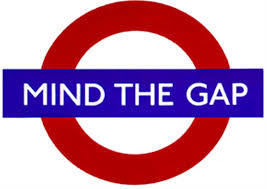By Rose O. Sherman, EdD, RN, FAAN
 Research reported in March 24/31 2015 issue of JAMA has opened a nationwide discussion about the pay inequality in nursing. The study findings indicate that male nurses make on average $5,100 more than their female colleagues. The data was drawn from National Nursing Samples conducted between 1988 and 2008 and American Community Surveys conducted between 2001 and 2013. The research team included two RNs – Dr. Ulrike Muenich from the University of California and Dr. Peter Buerhaus, a well-known workforce researcher at Vanderbilt University Medical Center. While none of the surveys used were originally targeted to look at pay inequity, the researchers were able to control for demographic differences, job position, hours worked and a variety of other factors as they evaluated pay.
Research reported in March 24/31 2015 issue of JAMA has opened a nationwide discussion about the pay inequality in nursing. The study findings indicate that male nurses make on average $5,100 more than their female colleagues. The data was drawn from National Nursing Samples conducted between 1988 and 2008 and American Community Surveys conducted between 2001 and 2013. The research team included two RNs – Dr. Ulrike Muenich from the University of California and Dr. Peter Buerhaus, a well-known workforce researcher at Vanderbilt University Medical Center. While none of the surveys used were originally targeted to look at pay inequity, the researchers were able to control for demographic differences, job position, hours worked and a variety of other factors as they evaluated pay.
The salary gap existed in all specialties except orthopedics and all positions including management. The monetary differences ranged from a low of $3792 in chronic care to a high of $17,290 in nurse anesthesia. The study has limitations in that only 7% of the total sample were men. No specific reasons for the inequalities were identified. Nursing experts have speculated that men may be better salary negotiators, women may take lower paying positions with more flexibility to raise children, and some organizations may offer higher salaries to male nurses to diversify their workforce. This is the first study published on this topic and more research is clearly needed.
Although there may be missing pieces to the puzzle, the research findings provide compelling evidence that there are pay inequalities in nursing. This is a troubling trend in a predominantly female profession long believed to offer equal opportunity to both sexes. It has resulted in a call to action from leaders in professional nursing associations for Executive Nurse Leaders in organizations to review wage data by gender for employees in equal positions with comparable experience to identify any bias in pay. Likewise, female RNs seeking positions should do more due diligence in organizations to insure that there is pay equity for both sexes.
There is a sense of urgency to rectify this problem. With three million Baby Boomers turning 65 each year between 2014 and 2034, it is anticipated that Generation Y (born 1980-2000) will be 50% of the nursing workforce by 2020. Workforce shortages are anticipated across all specialties. Generation Y nurses look to work in healthy environments where there is leadership transparency and equity in how they are rewarded. Their technological abilities and the availability of website such as www.glassdoor.com will enable them to more easily identify organizations where there are pay inequities between men and women. If they find inequality, they are more likely than any generational cohort that preceded them to leave an organization and seek other opportunities.
Wise leaders will look at this research and take action now.
Read to Lead
Muench, U., Sindelar, J., Busch, S.H. & Buerhaus, P.I. (2015). Salary Differences between Male and Female Registered Nurses in the United States. Journal of the American Medical Association. 313(12), 1265-1267.


 LinkedIn
LinkedIn Instagram
Instagram